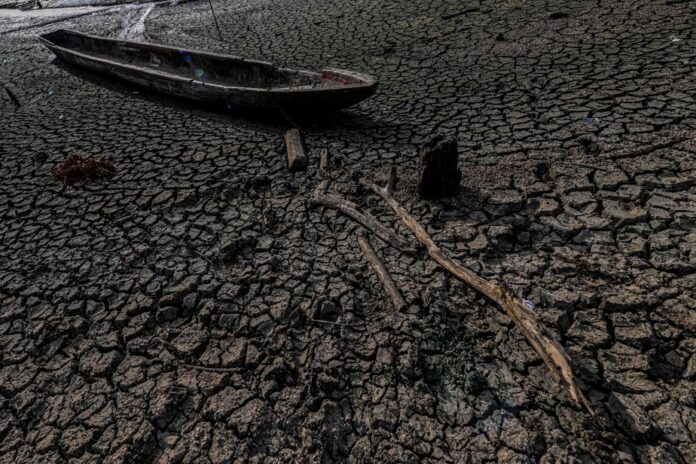(Panama) Drought threatens maritime traffic in the Panama Canal, a compulsory passage for 6% of world maritime traffic between the Atlantic and Pacific oceans.
Two artificial lakes, that of Alhajuela and Lake Gatun, supply the canal with water, necessary for the operation of the locks. But their level has dropped drastically due to the drought affecting the watershed.
“Lake Alhajuela lacks water every day more,” says Leidin Guevara, 43, who comes to fish there twice a month. It is on the gigantic Gatun Lake that ships sail from one coast to the other.
Faced with this situation, the Panama Canal Authority (ACP), for the fifth time this dry season, had to limit access to the interoceanic route through which 6% of the world’s maritime trade passes, mainly from the United States. , China and Japan.
The two lakes provide the water allowing the operation of the enormous locks which, on the Pacific side as well as on the Atlantic side, hoist ships up to the level of the canal, or lower them to that of the oceans. Each time a ship passes, approximately 200 million liters of fresh water are discharged into the sea.
“The lack of rain first impacts our water reserves,” Erick Cordoba, director in charge of water at the ACP, told AFP. As a result, Neopanamax-class ships – the largest, with a draft of just over 15 meters in fresh water, and paying the most expensive tolls – can no longer pass, he adds. he.
In fiscal year 2022, more than 14,000 boats carrying a total of 518 million tons of cargo passed through the Canal, bringing in $2.5 billion to the State of Panama.
All the lights turned red for the first time in 2019: the Canal had only three billion cubic meters of fresh water left, whereas it needs just over 5.2 billion to operate.
Since then, the Panamanian authorities fear that shipowners will seek other alternative routes because of the uncertainties surrounding the possibility of passing through the Canal.
Canal administrator Ricaurte Vasquez recently acknowledged to Panamanian internet news outlet SNIP Noticias that lack of water is the main threat to traffic through the transoceanic route.
“Without a reserve that brings new volumes of water, this situation will prevent the growth” of the Canal’s activity, Jorge Quijano, former administrator of the seaway, told AFP.
“It is essential to find new sources of water when climate change is already being felt, not only in our country, but all over the world,” he adds.
The Canal watershed also provides fresh water to more than half of Panama’s 4.3 million people.
Already, the drought has caused running water cuts in several areas of the country. Residents have demonstrated and experts fear conflicts between users and the Canal around which the city is developing without a real urban plan, causing the need for drinking water to explode.
“We don’t want to get into a philosophical conflict between water for Panamanians and water for international trade,” warns Ricaurte Vasquez.
Panama’s Ombudsman’s Office in a statement on Tuesday urged the government to “guarantee access to affordable and reliable water services” as these are “fundamental human rights”.
Admittedly, the Canal suffered from a “rainfall deficit like the rest of the country, but within the normal limits of a tropical dry season”, Luz de Calzadilla, director of the Panama Meteorological Institute, told AFP.
However, she warns, “it is highly probable” that Panama will be affected during the second half of the year by the Niño climatic phenomenon, characterized by a drop in rainfall.
“Truth be told, the Canal administration is working miracles to maintain business activity while meeting its social responsibility to provide clean water for human consumption,” remarks Ms. de Calzadilla.
For his part, Leidin Guevara, the fisherman of Lake Alhajuela, warns against a backdrop of birdsong: “This year is the worst drought I have seen”.


















